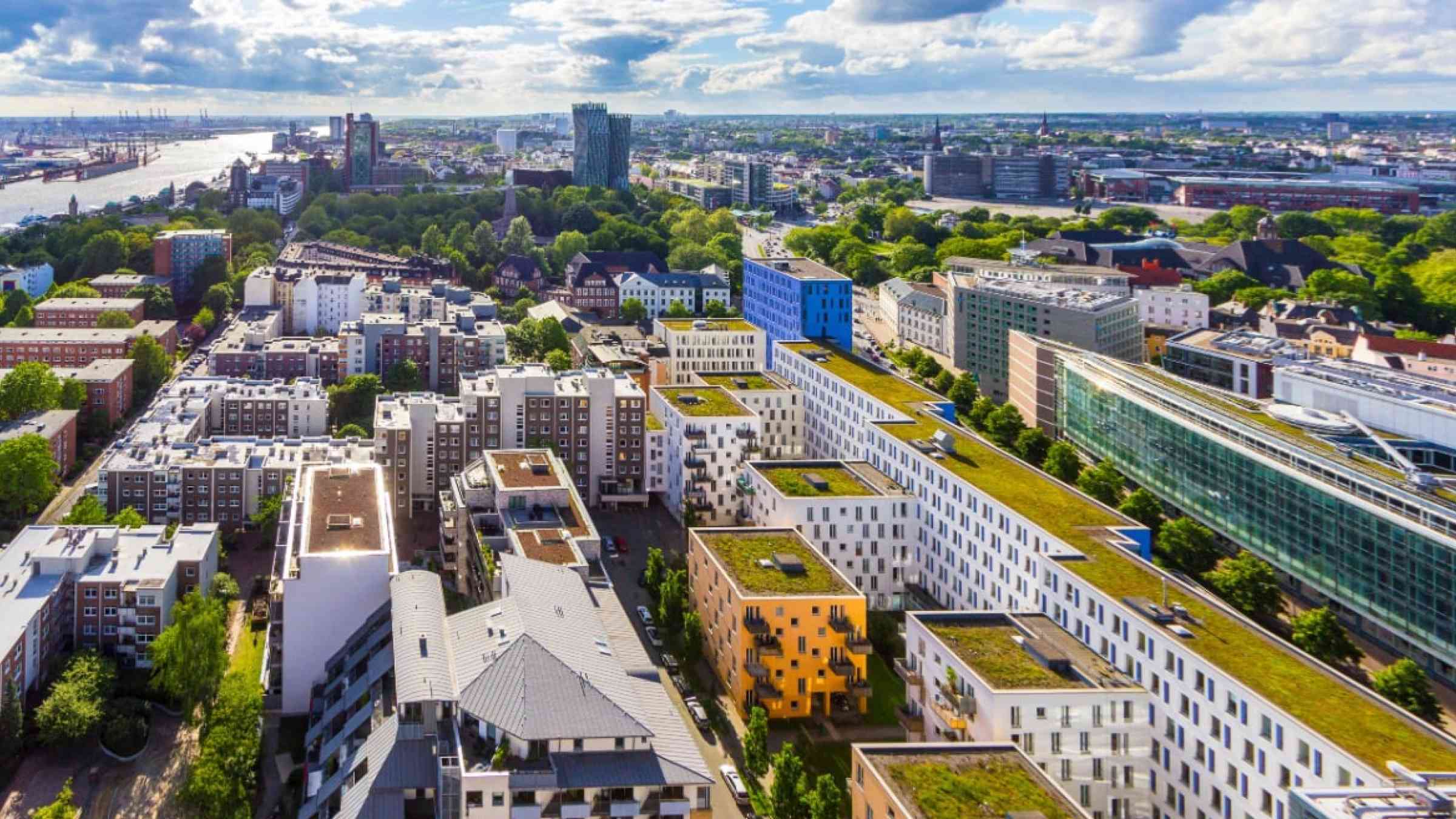
As Victoria, British Columbia, commits to removing obstacles to green roof installations and Somerville, Massachusetts mandates their inclusion in new buildings, a Seoul case study underscores the positive social and environmental outcomes of such policy changes.
In January, Victoria councillors unanimously voted to explore ways to help residents install green roofs and rooftop solar, reports Capital Daily, addressing barriers like zoning and floor-space-ratio bylaws.
The B.C. capital’s move comes 15 years after Toronto became the first city in North America to pass a bylaw requiring all new construction with a footprint exceeding 2,000 square metres to incorporate a green roof.
The decision comes just weeks after Somerville, Massachusetts, passed a law that will require all new buildings and major rebuilds with flat roofs to ensure that 80% of roof space is green.
Excluding only “development subject to the city’s Affordable Housing overlay,” the law applies to mid-rise, high-rise, mixed-use, and commercial zoning districts, Pete Ellis, community organizer and manager of the Somerville-based design firm, Recover Green Roofs, told Living Architecture Monitor.
Somerville already has an ordinance that sets minimum requirements for native plants and trees in city-owned parks, public spaces, and streets.
“In a city as dense as Somerville, it is a real challenge to find ways to create meaningful new green space,” said Coun. Ben Ewen-Campen. “Green roofs are a great tool to help us solve this problem—and people love them.”
And while the beautifying and biodiversity-boosting reasons for green roofs are obvious, new research from Seoul’s Kyung Hee University and the University of New South Wales shows they also come with clear public health and climate benefits.
Running “large-scale cooling climatic and building energy simulations under three greenery coverage scenarios to evaluate the potential of green roofs to lower the temperature and cooling needs of Seoul during the hottest summer month, August,” the team found that green-roofing 90% of its buildings decreased the city’s air and surface temperatures by up to 0.54 and 2.17 °C, respectively, reports Mirage News. That cooling translated into a 7.7% drop in building energy demand for air conditioning.
The heat stress-easing changes were generated by “non-irrigated extensive green roofs—a type of lightweight green roof with large-scale implementation potential and lower maintenance costs.”
Just published in the journal Nature Cities, the study is the largest of its kind to date.
“Previously, we have only looked at the energy impact of green roofs for singular buildings, but now this is the first study to evaluate the real climatic and energy impacts of green roofs at the city scale,” study co-author Mattheos Santamouris, the Anita Lawrence Chair in High-Performance Architecture at the University of New South Wales, told Mirage News.
Flagging “severe urban overheating” as a growing, and lethal, risk in cities around the world as global heating worsens, Santamouris attributed the cooling power of green roofs to the biochemistry of plant transpiration and the insulating blanket provided by layers of soil and vegetation on roofs, reducing heat transfer.
He said green roofs are also a boon for stormwater management and biodiversity. However, as “one of the more expensive heat mitigation technologies with initial capital costs and ongoing maintenance,” green roofs are likely beyond the current reach of cities in developing countries, he added.
But even so, Santamouris said cities in developed countries should seize the opportunity afforded by the technology, given the current warming trajectory that could see urban night temperatures increasing by up to 5°C by 2050.
“There is an urgent need to implement a combination of heat mitigation techniques and technologies in our cities to decrease urban temperatures,” Santamouris said. “If we do not, the cost in the coming decades will be catastrophic, not just for the economy, but for quality of life, particularly for low-income populations who will suffer the most.”
Back in Victoria, city staffers will be working on a range of issues as they begin clearing a path for green roof construction. As outlined in a 2021 case study by the then Canadian Institute for Climate Choices (now the Canadian Climate Institute) and the Smart Prosperity Institute, key challenges include the costs of design, installation, and maintenance. “Even the simplest and least expensive design requires a higher upfront cost than conventional roofs,” say the authors, and there is still a strong tendency to calculate benefits in purely private terms, rather than accounting for improvements to the public good.
Other challenges include attitudinal inertia, lack of capacity, and a lack of strong policy and clear regulations. The authors cited Toronto’s Green Roof Construction Standard as a good act to follow.